Polyester Fleece
Fleece keeps you warm even when wet and dries quickly. This makes it a popular fabric for watersport clothes.
Basic fleece is made from 100% polyester and has a soft, smooth surface. The higher quality fleece and heavier winter fleece can be used for apparel, but is not recommended for performance apparel. Most outerwear and adventure wear are made from performance fleece because of its warmth and softness.
Fleece comes in varying numbered weights, the higher the number, the heavier the material. The best fleeces are soft, smooth outside combined with a fuzzy, warm backing make it great for sweatshirts, sweatpants, and blankets.
Minky fleece is a particularly soft and warm lightweight fleece fabric, sometimes called cuddle fleece. It may have a low pile, or longer fibers that make it warmer. Because of its warmth and softness, Minky is ideal for clothing like scarves, hats, and gloves because of it's stretch. The warmer piles, like Sherpa Minky, are often used for coat and hood linings.
Fleece jackets and other fleece clothing (such as fleece shirts) are perfect for day hikes and float trips in cooler weather. Fleece clothing should be mandatory for anyone hiking in “uncertain weather” or who ventures into the backcountry on multi-night backpacks.
A drawback of fleece is the lack of compressibility.
In particular, medium and heavyweight fleece is bulky.
For backpacking, it is best to take one or two lightweight fleece shirts,
and wear them in layers if the weather is cold.
Better than Cotton
Since cotton is such a useless fabric for serious water sports, camping or backcountry trips, fleece may be a smarter choice. Fleece clothes are more durable than even high-quality cotton clothing. Quality fleece clothing lasts years, even decades, if properly cared for.
Unlike cotton, fleece retains most of its insulating properties even when the garment is wet. This makes it ideal for watersports. Fleece clothing also dries fast, much the opposite of cotton clothing which can take forever to dry. Indeed, your body heat can dry out wet fleece clothing surprisingly fast.
Finally, fleece clothing is also warmer, far softer and more comfortable than clothing made from cotton.
This is nice for swimming and other immersion sports
where you go in and out of the water a lot.
Anyone who plans to camp out, take long day hikes,
float the rivers or plan multi-night backpack trips
should have several types of fleece clothing available while leaving cotton clothing at home.
Hot Weather
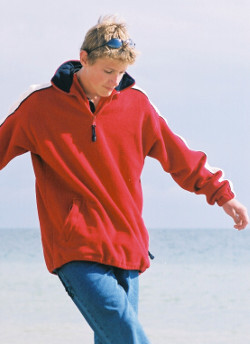
In hot weather fleece wicks moisture from your skin keeping you dry. If you get too hot, pour some water over your fleece clothes to keep them cool through evaporation.
Cool Weather
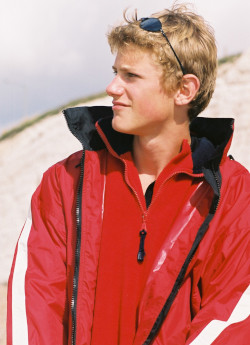
The fleece pile traps warm air and thus keeps you warm and is often used as lining in jackets and anoraks. It is easier to wear a fleece pullover under a thin anorak, because you can wear each garment on its own.
In the Water

Fleece clothes keep you warm in the water by reducing the water flow over your skin. Fleece is hydrophobic and does not hold on to water for long. You can just squeeze it out. Even when still damp, it feels almost dry.
Types of Fleece Clothing
Years ago, fleece was relegated to functioning as a soft-inner for technical winter jacket shells. Happily, fleece’s increasing popularity has resulted in fleece now being used in most clothing types.
Fleece shirts are available in a motley collection of sizes, shapes, styles and thicknesses. Choose what works for your needs. For swimming it is best to have one thinner fleece shirt worn against the skin. Then add a thicker fleece shirt for colder days. Fleece shirts are also excellent for sleeping in, too.
Fleece hats are a good choice for colder weather. Unlike cotton, the hats don’t lose all their insulating properties when they get wet. Fleece hats are also lightweight and very soft. In colder weather, fleece hats are far superior to cotton hats.
Fleece Gloves are ideal for camping and colder weather down to freezing. They are very thin, comfortable and easily packable. However, the gloves aren’t waterproof. Thus, anyone who plans to “play in the water” or simply works outside should avoid gloves that are made from 100% fleece and lack an outer water barrier.
Fleece Sweatpants could be your watersports pant of choice. Except during warm days, you can always wear fleece sweatpants for your watersports. In particular, the fairly thin North Face Sweatpants are ideal for swimming and overnight backpacking. And yes, fleece sweatpants make for superb “around the home” pants during the winter months, too.
Fleece Blankets are more comfortable for home. The blankets also work great for car camping. But for backpacking and overnight float trips (where you lack the room to pack bulky items), leave the blankets behind and stick with a compact sleeping bag.
Not Windproof
One weakness of a fleece clothing is that it allows the wind in. On colder, windy days, often a lightweight windbreaker (maybe one that is somewhat waterproof) can be worn over a fleece shirt or jacket.
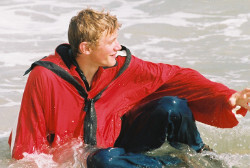
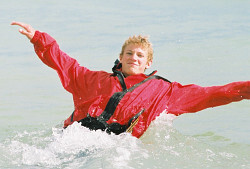
Thermal Underwear
Thermal fleece moves moisture away from your body. Keeping warm depends on reducing air or water flow across your skin. To achieve this thermal wear garments should have a snug fit without being too tight.
Wearing matching swim shirts and tights certainly adds to the warmth of your whole body. A one-piece suit is even better as it leaves no gaps around the waist when you move around.
Polypropylene and Chlorofibre achieve this by having the lowest density of all textile fibres. Because these fibres are moisture repellent, they dry quickly. Wash your garment the night before, wear it the next day.
Quality thermal wear does not absorb much moisture, is quick drying, warm and comfortable to wear. It a very popular choice for canoeists, hikers, and other outdoor people.
A lightweight fabric is a must to give ease of movement without sacrificing comfort.
Ask for warmth with low weight, quick drying and hard wearing.
Thermal swim shirts are usually made from 95% Polypropylene and 5% Spandex.
Swimming Lessons
During swimming lessons a thermal swim shirt and thights will keep you or your child warm better than a regular rash guard. It allows them to swim even when its cooler and lets them stay in the pool longer. The thermal shirt also keeps them warm during their out of pool exercises. Besides, swimming lessons in clothes are much more fun.
Another benefit is that they learn early to swim in light clothing and begin a good habit for sun safety.
They can wear it all summer in or around the pool, or when hiking, camping, boating, and any wet adventure sports.
Cleaning at Home
A nice benefit of fleece clothes is that the fabric is easy to clean. The quickest way is to wear them under the shower after your adventures. Unless the label states otherwise, fleece is safely washed in a normal washing machine using cold or warm water. Just be sure not to use bleach.
To dry out a fleece garment, toss it into the dryer on a low to medium setting for 10 to 15 minutes. Fabric softener may safely be used, as can anti-static dryer sheets.
Cleaning Outdoors
Not only is fleece is easy to clean at home, it is also easy to clean outdoors. A simple dunking in a river or lake, with perhaps a bit of scrubbing to remove any caked in mud or food stains, often is all that’s required to keep fleece clothes clean and smelling good.
Unlike cotton, fleece that is cleaned “streamside” dries out quickly.
Just wring out the garment as much as possible and let it air out in the breeze or the sun for half an hour or so.
Then put on the garment and let body heat do the rest.
Reader Comments
Fleece / Windbreaker Combo
by Pierre, from Bordeaux, FranceMost of my hiking I do in the summer when it rains. Rain gear leaves me hot and sweaty. I sometimes leave rainwear in the side pocket of my pack, and just enjoy getting soaked during a rain shower. Getting wet in my fleece clothes is so refreshing, without getting too chilled.
When I can’t avoid the wind or it’s cool I’ll wear an anorak or hiking cape over a fleece top. This is also my main swimwear. I don't get changed just because I come across a lake or stream. It dries so quickly, why bother?
Usually my legs stay warm when hiking even on cool days. In rough terrain I wear quick drying cargo pants, otherwise shorts, or a rain kilt which is most comfortable for hiking. I don’t change out of wet clothes until I know I can stay dry.
An essential part of my kit has become a microfiber windshirt with good sun protection, some moisture protection, and very breathable. On a couple trips I’ve used a “softshell” as my outer layer and took along a very light waterproof anorak as backup for the truly bad rain. I wear these clothes for swimming too.
Pool Training
by Arnaud, from Paris, FranceFleece clothes are ideal for tough resistance swim training. They soak up a lot of water and get heavy, but dry out quickly before I go home. Water just falls out of them.
My training begins with a long shower to clean my clothes and wash any fluff off. On my way from the shower to the pool I notice that the water is running off quickly from my fleece clothes. The top is just damp after a few minutes.
In the pool my fleece clothes feel soft and comfy. They slow me down good deal because they soak up so much water. This is the training benefit I get from swimming in fleece clothes. I have to work harder against the resistance in the water and that builds strength and muscles.
Several short sprints with brief recovery breaks work best for me. Every now and then I take a break on poolside. Once most of the water has run out of my fleece clothes, I go back into the pool for another round.
During longer sessions I switch between tight and loose fitting clothes, or layer them. This lets me adjust the training level from easy to hard. Finally I finish it all off under the shower to rinse the chlorine out.
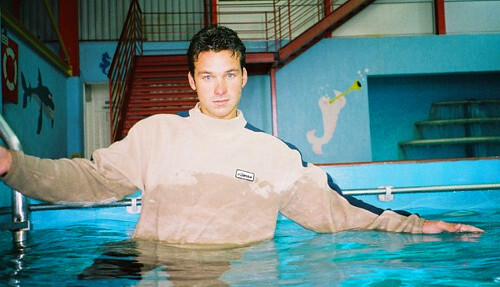
I often wear a fleece pullover for swim training.